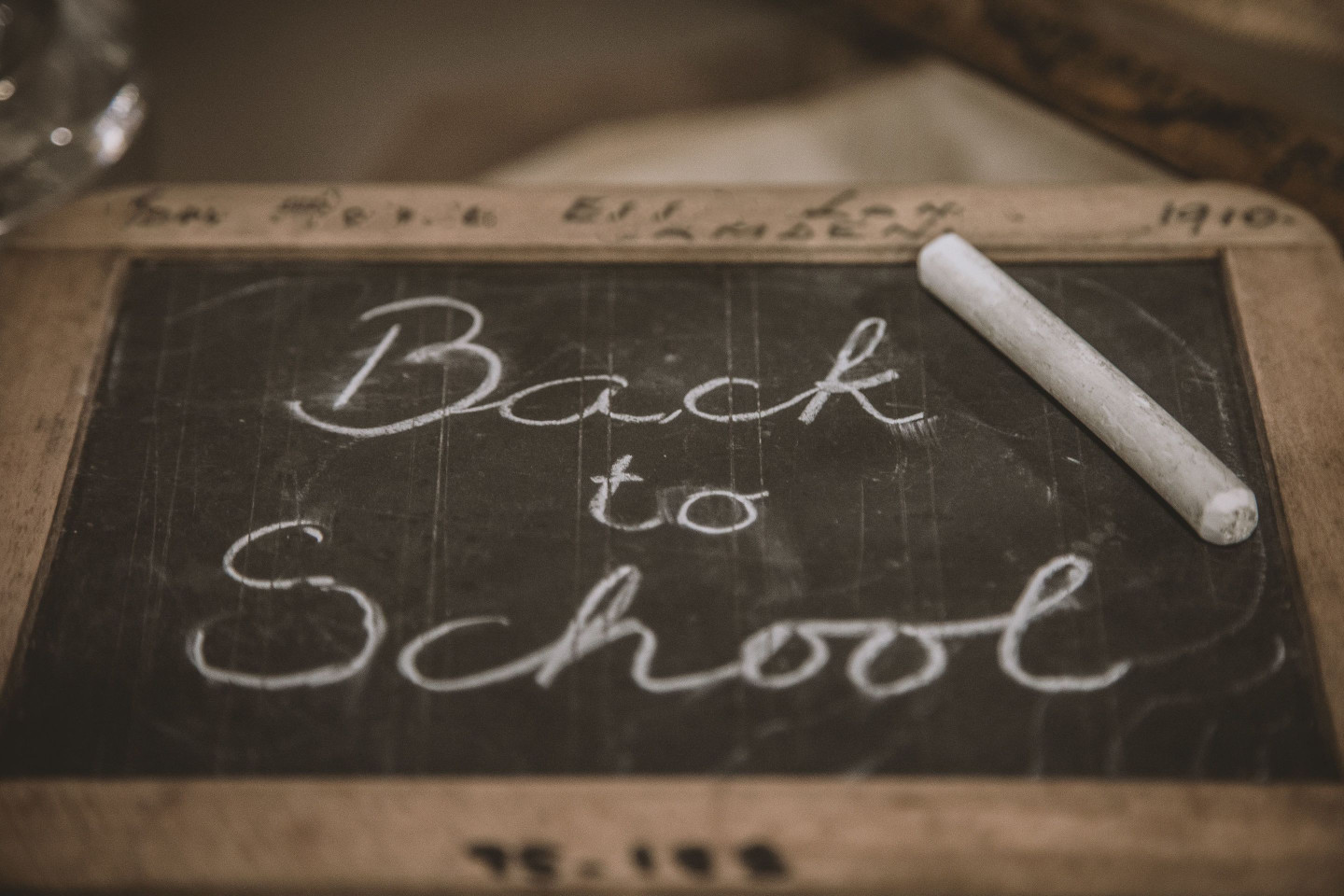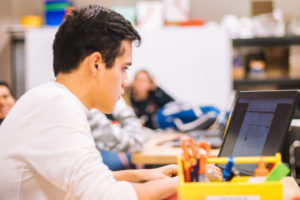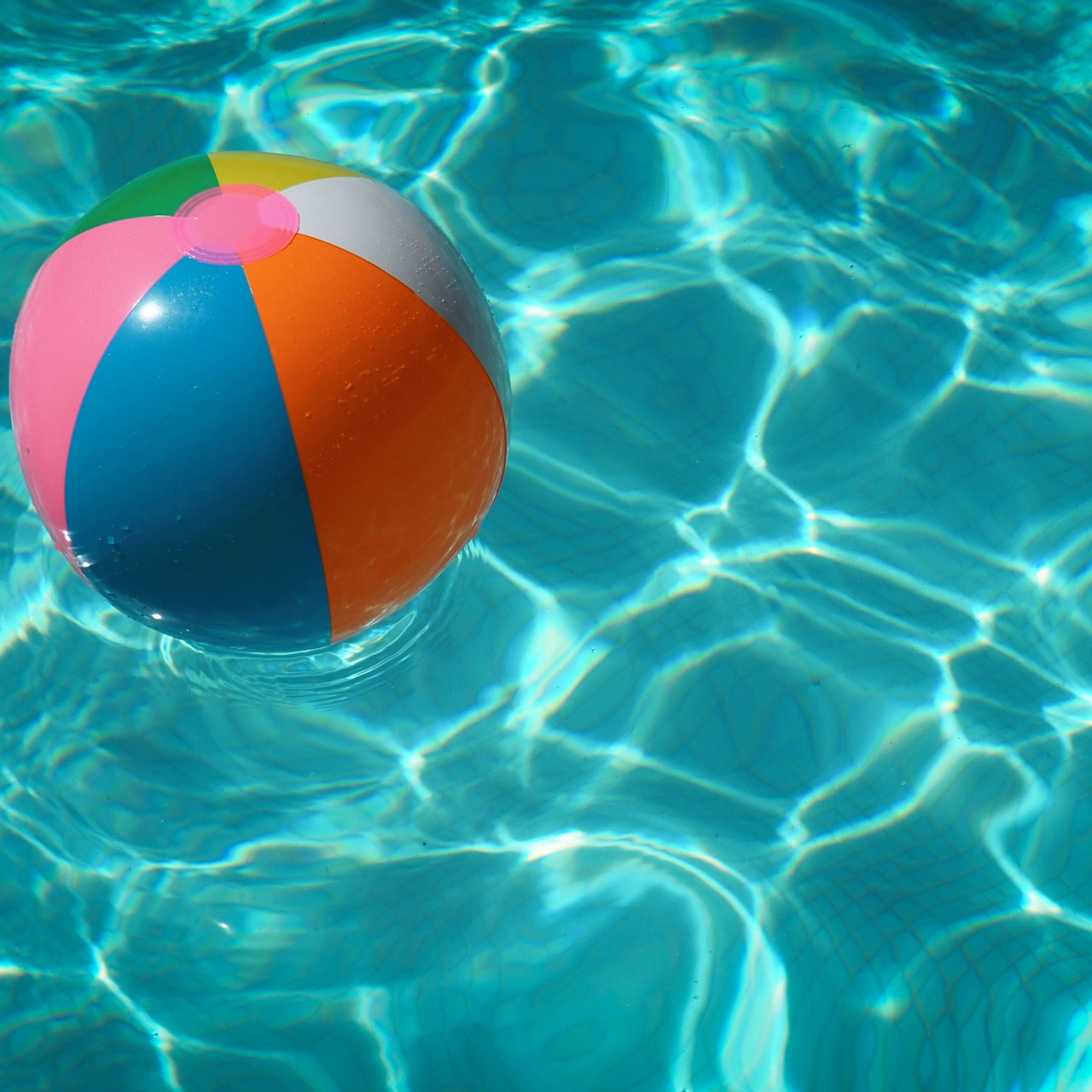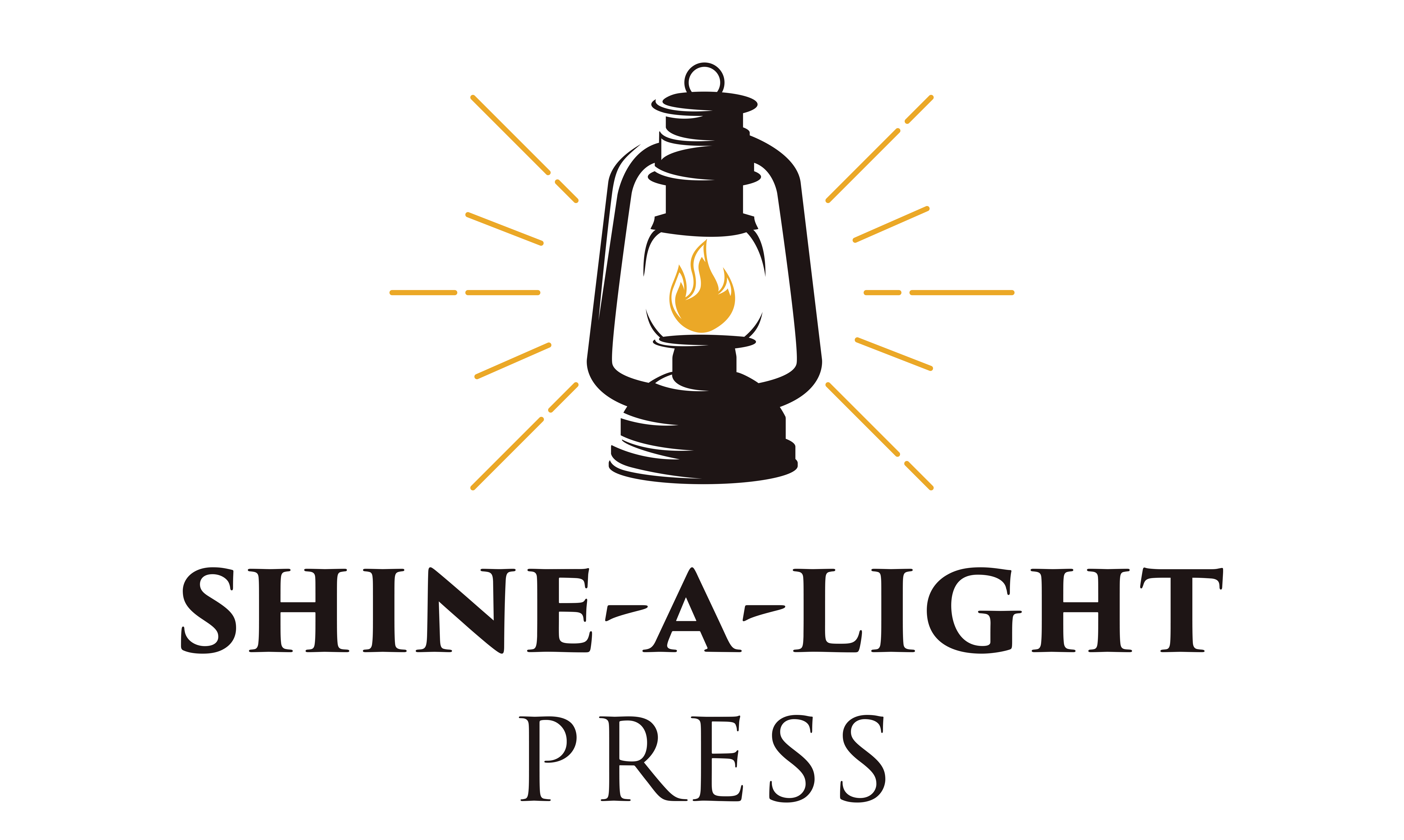
by Andrea Elston
Well, ready or not, the time has come for school…in some fashion…to begin. Whether you are setting your child up with a laptop at your kitchen table, or checking their temperature and making sure they have their lunch and their mask before sending them off to their socially-distanced classroom, school has started. I thought I’d share some of my favorite tricks of the trade and products that helped make my year a little smoother. These work in any learning situation…not just the traditional classroom.

Set a schedule and stick to it (as much as possible). Students of all ages depend of consistency. There is comfort in knowing what to expect…even if it’s just the fact that math comes first, or that the day will end with reading a chapter from Indian in the Cupboard . Of course, life happens, and kids learn they have to adjust…but in a world with so much uncertainty, a little stability goes a long way.
Set expectations at the beginning! Please do not take this to mean, go over the rules and then move on to the first lesson in your daunting curriculum syllabus! Take the time to teach the students (or your own child) what a successful year will look like in your “classroom.” I usually spent 2-3 days going over procedures before I ever even cracked a book with my students. This sounds like a ridiculous amount of time, but I found it was much easier to teach the kiddos how to avoid striking the match rather than try to put out the blazing fire 3 weeks into the year. I taught everything from when to sharpen a pencil to how a respectful conversation sounds with a fellow classmate or even an adult! (I am astounded at how some students speak to each other let alone adults!)

Finally, don’t get stuck on any one curriculum or program. If your school or learning environment allows for it, explore and supplement! There are SO many great resources out there! Also remember, teachers and parents ARE the curriculum. It is not the books. My advice is don’t let the curriculum drive your teaching…let the curriculum support YOU in teaching. Students of all ages need to be nurtured and validated. Students are at school to grow not only academically, but socially and (depending on your institution) spiritually as well. It’s easy to skip over this in effort to “get through the book”. Your students will most likely not remember what grade they learned cursive, multiplication, or where to put a comma, but they will remember YOU. I never bought into the “Don’t smile until November” philosophy. I wanted my students to feel comfortable with me, trust me, and hopefully learn something from me! I was on their side from day one, and if I didn’t smile at them, how would they know that? Plus when you teach first grade, it is impossible to avoid smiling, or if I’m being honest…laughing out loud! Six year old students are just plain hilarious!
Having said that…here are a few of my favorite resources. Because the majority of my career was with the littles, the resources here are mainly for primary grades, but the sentiments above apply to any level.

Books:
National Geographic: You Read/I Read books
You Read to Me, I’ll Read to You: MaryAnn Hoberman (also the author of A House is a House for Me…super fun creative writing activity)
Choral Reading-Dr. Seuss (or any rhyming book), Frog and Toad, Amelia Bedelia, George and Martha.
*I cannot stress enough the importance of reading WITH your child, not just to your child. And not even listening to your child read to you. Find books to read with them so they can match your pacing and inflection.
Teaching numbers/counting patterns:
 Students learn those mundane counting patterns the best if they are set to a rhythm or a song.
Students learn those mundane counting patterns the best if they are set to a rhythm or a song.
And as far as those pesky addition, subtraction, multiplication, and division facts, sorry to say…flashcards are the best way to learn! I know it’s boring, but I found that repetition and memorization was the most sure-fire way to assure a strong foundation. Please don’t skip this step!!
Phonics/Reading Curriculum
The method I found to be the most effective was the Slingerland/Spalding program. If you don’t already use it, I would strongly suggest researching how you can implement it into your phonics program. I also really found value in the Reading A to Z-online-program (Or RAZ-Kids) as a supplemental resource!
Writing: The Institute for Excellence in Writing is the best writing curriculum I worked with. This is a full-service curriculum…teaching kids to write starting at the Kindergarten level all the way through high school.

Websites I’ve used:
gonoodle.com (physical movement/coordination)
starfall.com (language arts)
ABCya.com (language arts)
IXL.com (math)
khan Academy for Kids (math)
junglememory.com (short-term, long-term, working memory support)
I sincerely hope these tips and resources are helpful, and many blessings as you educate the next generation in whatever capacity/role you find yourself in!

 Summer is here, which means a break from school for most kids. Did your child experience smooth sailing or nearly failing this school year? Either way, the “brain drain” that happens during the summer – the normal loss of learning when kids are out for school – can be prevented, and you don’t need lots of money to keep your child learning . Here are three cheap ways to keep kids learning during the summer.
Summer is here, which means a break from school for most kids. Did your child experience smooth sailing or nearly failing this school year? Either way, the “brain drain” that happens during the summer – the normal loss of learning when kids are out for school – can be prevented, and you don’t need lots of money to keep your child learning . Here are three cheap ways to keep kids learning during the summer. 





 Students learn those mundane counting patterns the best if they are set to a rhythm or a song.
Students learn those mundane counting patterns the best if they are set to a rhythm or a song.